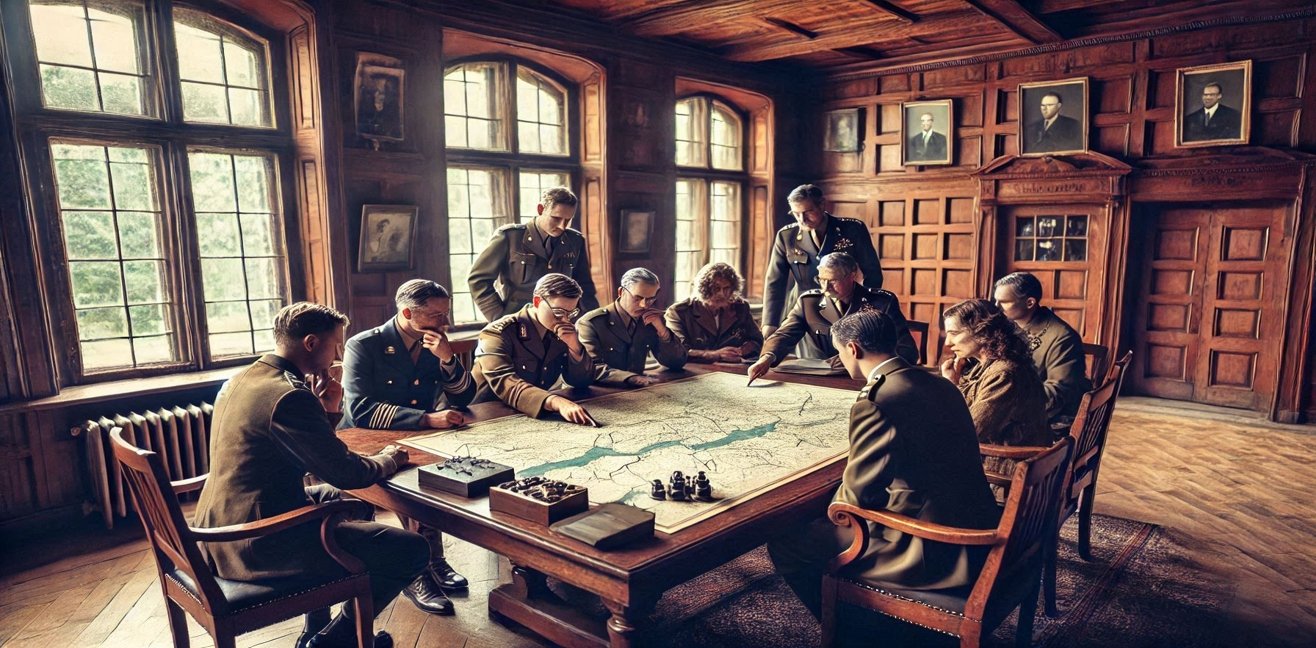World War II was a complex period marked by numerous military operations and strategic maneuvers. One of the significant turning points of this period was the launch of Operation Alaric by Adolf Hitler on May 18, 1943. This operation aimed to have the German armies occupy Italy in case of the possibility of Italy surrendering to the Allied forces.
The Background of Operation Alaric
1943 was a critical year in World War II. The Allied forces had achieved significant victories in North Africa and were beginning to plan the invasion of Italy. This situation posed a great threat to Italy, one of Germany’s closest allies. Under the leadership of Benito Mussolini, Italy had suffered significant losses in the war and was grappling with internal unrest. The possibility of an Allied landing in Sicily weakened Italy’s resolve to continue the war.
Hitler’s Strategic Move
Adolf Hitler, anticipating the possibility of Italy surrendering to the Allies, planned Operation Alaric. The primary goal of the operation was to maintain Germany’s strategic position in the Mediterranean in the event of Italy’s surrender and to prevent the progress of Allied forces in Italy. Hitler intended for the German forces to quickly occupy Italy, securing critical positions and halting the advance of the Allies.
The Launch and Progress of the Operation
On May 18, 1943, Operation Alaric was officially launched. German forces were deployed near the Italian border, and invasion plans were put into action. The German General Staff formulated a detailed strategy to carry out the operation swiftly and effectively. The German army aimed to capture key strategic locations in northern Italy and prevent the Italian military from surrendering.
Italy’s Surrender and the German Occupation
Several months after the launch of Operation Alaric, on July 25, 1943, Benito Mussolini was dismissed and arrested by King Victor Emmanuel III of Italy. This development accelerated Italy’s process of surrendering to the Allied forces. On September 3, 1943, Italy signed an armistice with the Allies and officially surrendered. However, this did not prevent the Germans from acting swiftly.
Under Operation Alaric, German forces quickly advanced into northern Italy, capturing strategic points. Many important cities, including Rome, fell under German control. Despite Italy’s surrender, the Germans set up a strong defensive line in the region, attempting to halt the progress of the Allies.
Results and Impact
Operation Alaric was a significant military maneuver that greatly impacted the course of World War II. The Germans displayed a strong presence in Italy, slowing the progress of the Allied forces. However, the Allies continued their advance and eventually captured Rome in 1944.
Operation Alaric was an important example of Hitler’s strategic thinking and the rapid maneuvering ability of the German army. The occupation of Italy led to a further escalation of the war on the European front, and it became a critical turning point in the Allies’ path to victory.
This operation became a part of the complex and strategically rich history of World War II. Operation Alaric was a significant military initiative that affected many lives and played a key role in the outcome of the war.
#OperationAlaric
Sources for Further Reading:
- Ian Kershaw, “Hitler: A Biography” – A key resource providing detailed insights into Adolf Hitler’s strategic moves and Operation Alaric.
- Max Hastings, “All Hell Let Loose: The World at War 1939-1945” – A comprehensive book that covers the overall course of World War II and significant military operations.
- Rick Atkinson, “The Day of Battle: The War in Sicily and Italy, 1943-1944” – A detailed study of the Allied operations and German resistance on the Italian front.
These sources will be helpful for those who wish to gain a deeper understanding of Operation Alaric and the Italian front during World War II.




